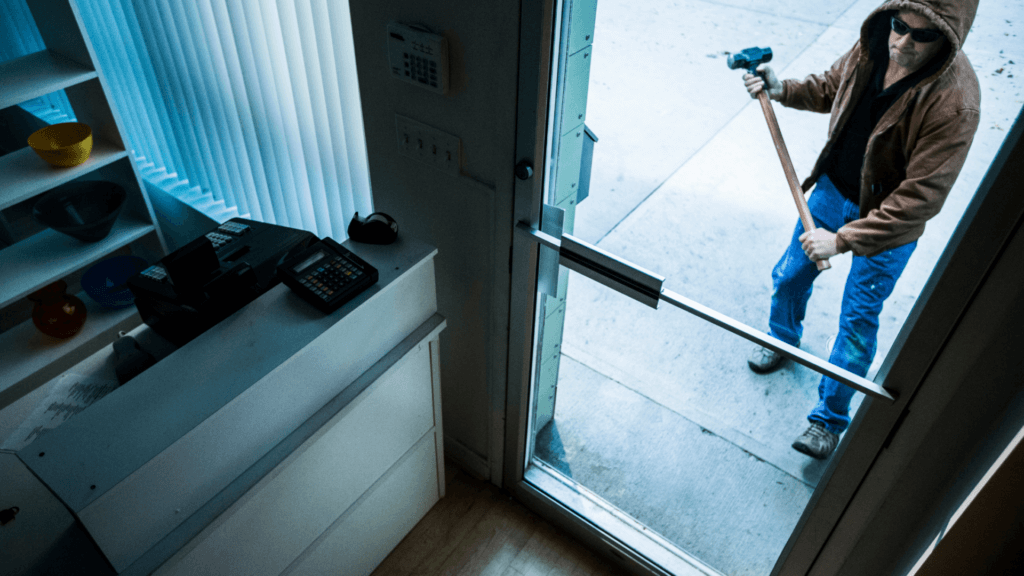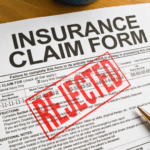
When a business or commercial property has been vandalized, it can cause problems for not only the owner of the company but for its employees as well. This specific kind of damage can cause serious harm to a business’s reputation and can leave owners dealing with costly repairs. Although commercial property insurance can cover some property damage costs, there are specific policy stipulations policyholders should be aware of should their business be impacted by vandalism.
In many cases, commercial insurance provides coverage for acts of vandalism. When reviewing different coverage options, it’s important to seek comprehensive coverage. For instance, if a business is located in an area with heavy foot traffic or is prone to vandalism, ensuring your business insurance coverage damage in the event your business is vandalized should be a priority.
Vandalism and Malicious Mischief Coverage
Insurance coverage for vandalism is most commonly known as vandalism and malicious mischief coverage. Vandalism and malicious mischief are described as behavior bringing about intentional injury or destruction of property. While vandalism is purposeful damage caused to someone else’s property, malicious mischief may not have been intended. Certain acts, however – such as egging a property – toe the line depending on the outcome.
Vandalism and malicious mischief insurance coverage protects against losses sustained due to the actions of vandals. This coverage is included in most basic commercial property insurance policies; however, if your business property is unoccupied during certain periods of the day, such as is the case with many churches and schools, then a higher deductible typically applies to vandalism and malicious mischief coverage because vandals often know there is a reduced risk of being caught.
Typically, vandalism and malicious mischief coverage can be written as a policy endorsement or rider to a standard commercial property policy. Landlords, in particular, can benefit from this type of coverage, especially if some of their properties are located in areas prone to vandalism and crime.
Often, cases of vandalism are thought of as events that can leave windows broken or graffiti covering storefronts. However, a vandalized business can have a much broader effect than just the property’s aesthetics. For instance:
- Damaged or broken company vehicles and machinery can cause a business to come to a complete standstill. Broken or damaged technology cannot keep track of a company’s orders, and broken computers often leave employees unable to complete their jobs. Damage like this can force a business to operate outside its primary location while repairs are undertaken. This can cause major slowdowns or even complete stops in production.
- If additional space is needed while the vandalized property is repaired, operating costs can increase, with additional rent, supplies, and needed repairs to bring the primary property back to operation.
- Sales are often lost at vandalized brick-and-mortar storefronts. If vandalism or a break-in happens, the news of it is likely to spread throughout the community, and customers may be hesitant to return out of fear. This can lead to decreased sales and cash flow for an already disrupted business.
What’s Covered Under Vandalism and Malicious Mischief Coverage
Most standard commercial property policies will cover most types of vandalism and / or malicious mischief. Typically, the following losses can be covered with the purchase of a vandalism and malicious mischief policy endorsement:
- Damaged storefronts
- Interior damage caused by vandalism
- Broken windows
- Graffiti
- Looting
- Riots
- Civil commotion
- Debris removal
Here are some key points to consider regarding coverage for damage caused by vandalism and malicious mischief:
- Property Damage: Damage to business property, including buildings, equipment, inventory, and other assets, resulting from acts of vandalism are most often covered. This can include damage caused by graffiti, intentional destruction, and / or other malicious acts.
- Repair or Replacement: If a business is vandalized, the costs associated with the repair or replacement of the damaged items are generally covered. However, it’s important to note that some policies may have specified coverage limits.
- Contents Coverage: The contents within a vandalized business are also covered under a vandalism and malicious mischief policy endorsement. Items like inventory, equipment, furniture, and other items that may be damaged or stolen due to vandalism are protected. Typically, coverage can reimburse property owners for the value of damaged or stolen contents up to the coverage limits outlined in the policy.
- Business Interruption: In certain cases, businesses that suffer losses due to vandalism will need to temporarily close for repairs. A business interruption policy is important for owners to have in these cases, as it can help provide for lost income and ongoing business expenses during the period the property is inoperable.
What’s Not Covered By Vandalism and Malicious Mischief Insurance
While many losses can be covered under a commercial property vandalism and malicious mischief endorsement, certain losses cannot be. Typically, vandalism and / or malicious mischief losses are not covered in the event the property has been vacant for over 60 consecutive days. A structure is considered to be vacant if no one has been working or operating out of the property and it has been substantially left empty of any business or personal property necessary for normal use.
Additionally, vandalism committed by the business owner or anyone else listed as a policyholder is also not covered. This can include a disgruntled employee or former business partner who has not yet been taken off the policy. If things within the business relationship go south and the owner has not updated the policy, that means they are still technically a policyholder. Should they decide to return and trash the business, coverage will most likely be denied due to it being an intentional act committed by the policyholder.
What Happens if a Commercial Property Vandalism Claim is Denied?
In most instances, losses caused by acts of vandalism, mischief, riot, civil commotion, and / or looting are covered under a commercial property policy. However, commercial policies offer coverage on either a named perils or all perils basis. Named perils refer to coverage for a specific form of loss that is explicitly named in the policy. All risk policies, however, cover all forms of loss, except for any explicitly excluded.
Although many types of vandalism are explicitly covered under a commercial vandalism and malicious mischief endorsement, many related claims are denied for a variety of reasons. Often, insurance companies require proof from policyholders that they minimized the risk of vandalism before it occurred. If the business owner can prove they have security devices installed, good lighting, and adequate locks in place, the insurance provider is more likely to accept the claim. Unfortunately, however, even with the proper precautions in place, an insurance carrier can still wrongly deny or underpay a valid vandalism claim through the use of bad faith tactics. Most often, vandalism claims are denied because the commercial policyholder:
- Cannot prove ownership of the claimed items
- Cannot prove that a break-in or vandalism occurred
- Does not know the value of the claimed items
- Failed to perform preventative maintenance
Having proper documentation of all items that may have been impacted by the vandalism, as well as ensuring proper security measures are in place ahead of time can help policyholders better ensure their claim is accepted for payment. Additionally, if vandalism has occurred at a commercial property, one of the most important steps to take is to file a police report. Having a police report on hand is invaluable to the claims process and insurers can outright deny coverage without one. This is because a police report provides an official record of the incident, including a law enforcement officer’s opinion regarding the vandalism, and can be used as further proof of property damage. The report should include a list of stolen or damaged items and the policyholder should ensure that the list matches the items claimed with their insurance company.
Unfortunately, even with all appropriate safety measures in place, proper documentation, and a police report on file, valid commercial property vandalism claims can still be denied. Insurance companies can utilize various bad faith tactics in attempts to abandon their obligations and responsibilities to their policyholders. These tactics are often used as a means to financially benefit the insurance company by refusing to pay a legitimate claim or even to investigate and process a claim within a specific time.
Despite presenting themselves as professional organizations with a policyholder’s best interests in mind, insurance companies are ultimately for-profit organizations. Insurance companies turn a profit by collecting insurance premiums and lose money when they have to pay out on claims.
Because of the way this business structure works, it unfortunately encourages some carriers and claims adjusters to engage in bad faith practices for their financial gain at the expense of policyholders. When this happens, it is in the best interests of a policyholder to obtain legal counsel. An insurance coverage attorney who is experienced in commercial property claims can file a bad faith lawsuit in court and ensure the policyholder receives the money needed to repair their property and get back to business, as well as any statutory or other legal penalties to which they are entitled under state and / or federal law.
Commercial Property Insurance Claim Attorneys
Acts of vandalism that lead to commercial property damage can be devastating for business owners. If a valid vandalism claim is denied, it can put business owners in a difficult situation they may not know how to navigate without proper representation. Commercial property damage caused by vandalism affects countless businesses each year. At Raizner Slania, we understand that your business is an investment, and dealing with a commercial property damage claim can hurt your livelihood and your return on investment.
Many business owners have property insurance policies to protect their commercial buildings from damage and loss. If your commercial insurance carrier wrongly denies you proper compensation for a loss, you could have a claim.


